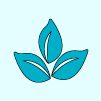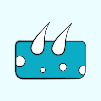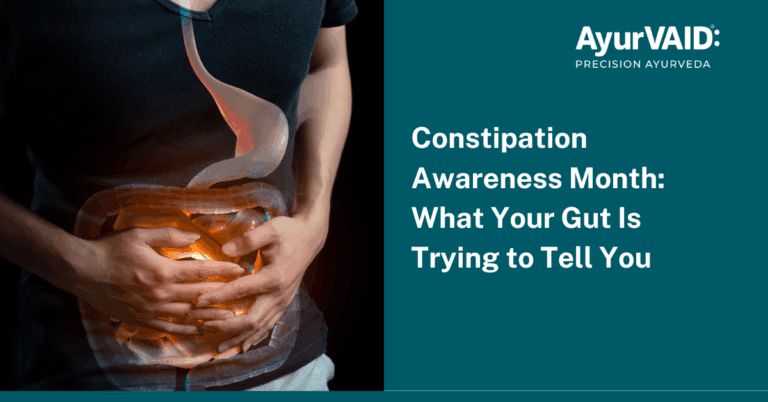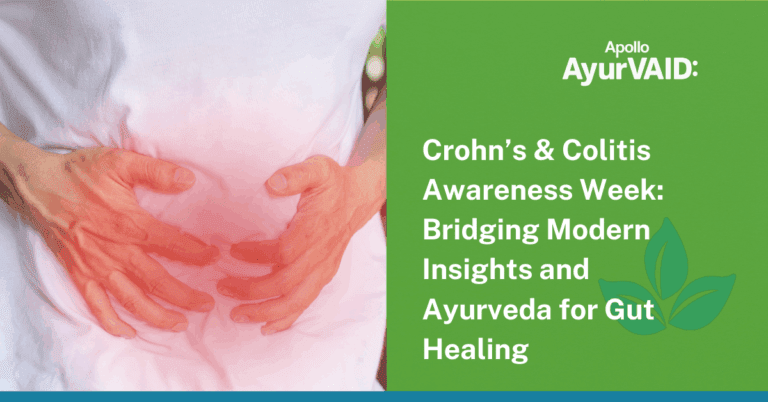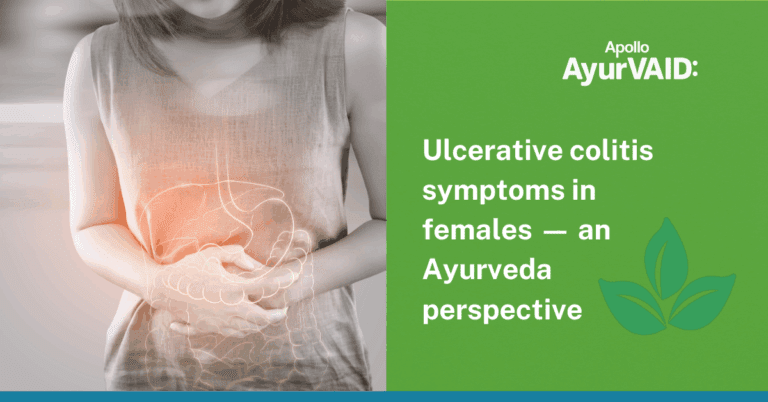Is it psoriasis or eczema? You might have come across this confusion while suffering yourself or seeing someone suffering from such skin-related condition. Both eczema and psoriasis are chronic inflammatory skin disorders that present with red, scaly, and itchy skin and, as such, tend to be confused because of their overlapping symptoms. Yet, knowing the psoriasis and eczema difference is paramount to accurate diagnosis and successful management. This blog will explain their unique characteristics, frequency, precipitants, and management strategies from contemporary as well as Ayurveda approaches to explain the intricacies of eczema vs psoriasis.

Eczema is a disease of the skin that affects most parts of the flexor regions of the body (flexor surfaces, such as the inner elbow and back of the knee), the hands, feet, face, and neck.
- The common symptoms of eczema include dry, itchy skin, rashes, bumps, redness, discharge, and discolouration.
- The common causes are allergies, irritant contact, heredity, and environment.
- In Ayurveda, eczema is considered “vicharchika,” which is attributed to an imbalance of Kapha dosha, involving the skin, blood, muscles, and body fluids.
- Symptoms often appear where elbows and knees are flexed but may also involve the wrist, face, and scalp.
The following are the target areas of the body where eczema is likely to appear:
Face: cheeks, chin, eyelids, and around the mouth.
Neck: front and back sides of the neck.
Flexural sites: Inside elbows (antecubital fossae), back of knees (popliteal fossae), wrists, and ankles.
Hands and feet: Palms, fingers, toes, and backs of hands and feet.
Scalp: While not as frequent, eczema can impact the scalp occasionally and is called seborrheic dermatitis
- The skin looks dark, scaly, and oozing, but not as thick as psoriatic lesions.
- Severe itching and scratching can become a part of everyday life.
- Eczema is linked with asthma and food allergies, but treatment may not always cure it.
- Stress can provoke eczema.
- Symptoms differ from person to person, with some exacerbated in drier winter air and others by warmer temperatures.
Psoriasis is a multifactorial, chronic, inflammatory disorder characterised by too many skin cells (keratinocytes) growing and dividing in the epidermis (the surface epithelium of the skin).It is an autoimmune, non-infectious disease characterised by erythematous lesions and silvery plaques.
Ayurveda terms it as “Ekakushta” or “Kitibha Kushtha,” associated with imbalances of Vata and Kapha doshas.
It may appear from infancy through adulthood.
The incidence is approximately 2% of the general population.
Characterised by red patches, silvery scales, itching of the skin, dryness, and cracking.
Scalp psoriasis can result in flaking, redness, and results in intense itching.
Common Sites:
Elbows and knees: These are commonly affected because they are prominent and because skin tends to rub and get irritated.
Scalp: Scalp psoriasis can manifest as dandruff-like flakes or more serious, crusty plaques.
Lower back: Psoriasis can form plaques on the lower back.
Nails: Nail psoriasis results in pitting, loss of the nail bed, discolouration, and thickening.
Face: Psoriasis can occur on the forehead, cheeks, ears, and within the mouth.
Genitals: Psoriasis may involve the genitalia in men and women.
Palms and soles: Psoriasis of the palms and soles is often very painful and disabling.
Psoriasis may be exacerbated by several factors, such as alcohol or cigarette smoking, some bacterial infections (such as Group A streptococci, which often precede guttate psoriasis eruptions), some drugs, HIV infection, being overweight, scratching, and stress.
The Key Distinctions: Eczema vs Psoriasis
While both conditions are inflammatory and cause red, itchy, scaly skin, several factors highlight the psoriasis and eczema difference:
| Category | Eczema (Vicharchika) | Psoriasis (Ekakushta/Kitibha) |
|---|---|---|
| Dosha Involvement | Predominantly Kapha (with Pitta and Vata involvement) | Primarily Vata-Kapha (Pitta may also be involved) |
| Skin Appearance | Red, oozing, itchy, not thick, darkened skin; often in skin folds | Thick, silvery-white scales, red plaques; appears in large patches |
| Common Sites | Flexural areas (elbows, knees, bends, neck, wrists, face, scalp) | Extensor areas (elbows, knees), scalp, back, nails, palms/soles, genitals |
| Itching | Intense itching with frequent scratching and secondary thickening | Severe, may lead to skin cracking and bleeding |
| Associated Conditions | Asthma, allergic rhinitis, and food allergies | Psoriatic arthritis, metabolic syndrome, cardiovascular issues |
| Age of Onset | Infancy or childhood onset is common | Can begin at any age, commonly before age 40 |
| Modern Pathogenesis | Delayed-type hypersensitivity, barrier dysfunction, and allergens | Autoimmune, T-cell mediated; rapid keratinocyte turnover |
| Panchakarma Approach | Vamana (emesis) emphasised in Kapha-predominant eczema, esp. upper body involvement | Virechana (purgation) emphasised for Vata-Kapha involvement |
| Topical Herbs | Neem, turmeric, aloe vera, and coconut oil | Similar herbs used; focus also on reducing dryness and scaling |
| Triggers | Stress, allergens, irritants, cold or hot climates | Stress, infections, alcohol, certain drugs, trauma |
| Seasonal Aggravation | Worse in cold/dry weather or with hot weather (varies by individual) | Often worse in the cold, it improves with sunlight |
| Prognosis and Flare-ups | Chronic with remissions; may be outgrown in some children | Chronic and recurring; less likely to resolve fully without lifelong management |
Diagnosis and Treatment Approaches
Proper diagnosis is the initial key step in both conditions. This comprises a careful patient history and extensive testing, perhaps a biopsy, patch tests, or other diagnostic procedures. With a confirmed diagnosis, treatment guidelines are formulated.
Important Differences and Resemblances
Resemblances:
- Both eczema and psoriasis are classified as Kushtha Roga, both of which originate from Agnimandhya and the accumulation of Ama (toxins), which disrupt the Doshas and affect important body tissues such as Rasa, Rakta, and Mamsa.
- Both are perceived as chronic diseases in which genetics, environment, and stress play a role.
- Dietary changes, stress control, and overall lifestyle changes (fluid intake, not using hot water, and cleanliness) are the basics for the control of both diseases.
- Topical solutions with herbs such as neem, turmeric, aloe vera, and coconut oil help reduce inflammation and moisturise the skin in both instances.
- Panchakarma treatments, especially Virechana and Raktamokshana, are recommended for cleansing and treating the cause of the problems in both conditions.
Differences in Emphasis:
Dosha Predominance : Eczema (Vicharchika) is generally characterised as a Kapha pradhana tridoshaja vyadhi, with Kapha playing an important role and resulting in features such as oozing. Psoriasis (Ekakushta, Kitibha, Sidhma) is chiefly related to Vata and Kapha dosha predominance, though Pitta may also be implicated.
Physical Expression: Eczema is said to cause dark, scaly, oozing skin that is “not as thick as psoriasis,” typically in folds of the skin. Psoriasis, on the other hand, occurs in “large patches of the skin” with thick, red scales that are silvery in colour and may be associated with painful arthritis.
In short, Ayurveda sees both eczema and psoriasis as problems in the whole body that show up on the skin, requiring a complete plan that includes tailored diet advice, lifestyle changes, stress relief, topical treatments, and cleansing Panchakarma therapies to fix the underlying Dosha imbalances and build-up toxins.


